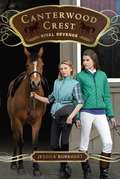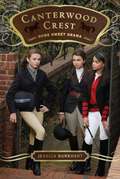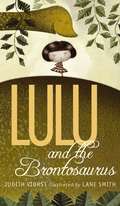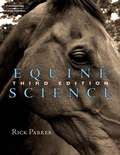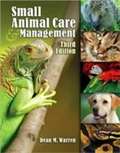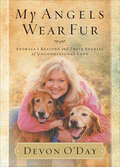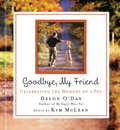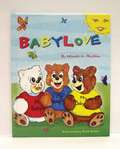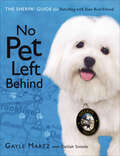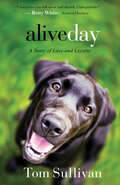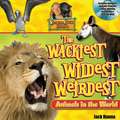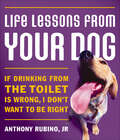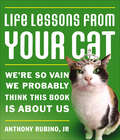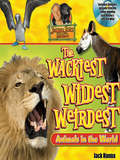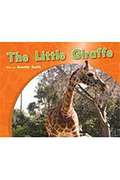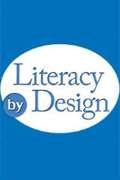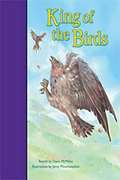- Table View
- List View
Rival Revenge: Take The Reins; Chasing Blue; Behind The Bit; Triple Fault; Best Enemies; Little White Lies; Rival Revenge; Home Sweet Drama; City Secrets; Elite Ambition; Scandals, Rumors, Lies; Unfriendly Competition; Chosen; Initiation; Popular; Comeback; Etc (Canterwood Crest #7)
by Jessica BurkhartIn Rival Revenge, the truth is out about whether Julia and Alison really cheated on the test that got them kicked off the riding team. Now they're back, and this time, they're not just in it to win it--they're out for revenge. A dish that's definitely best served cold.
Home Sweet Drama: Home Sweet Drama (Canterwood Crest #8)
by Jessica BurkhartIn Home Sweet Drama, if the girls have learned anything, it’s that only the strong survive at Canterwood Crest Academy. And Heather Fox is strong. After all, she’s the last Queen Bee left standing. But Sasha Silver has more than proven that she’s worthy competition—in and out of the arena. Is there a new Queen in the making?
Lulu and the Brontosaurus
by Judith Viorst Lane SmithIt's Lulu's birthday and she's decided she'd like a pet brontosaurus as a present. <P><P>When Lulu's parents tell her that's not possible, Lulu gets very upset. She does not like it when things don't go her way. <P><P>So she takes matters into her own hands and storms off into the forest to find herself a new pet, all the way singing: I'm gonna, I'm gonna, I'm gonna, gonna, get a bronto-bronto-bronto-bronto-saurus for a pet! <P><P> In the forest Lulu encounters a number of animals; a snake, a tiger, a bear, all of whom don't particularly impress her. And then she finds him...a beautiful, long-necked, gentle, graceful brontosaurus. And he completely agrees with Lulu that having a pet would be a wonderful thing, indeed! <P><P>Lulu thinks she's gotten her birthday wish at last. Until she realizes that Mr. Brontosaurus thinks that she would make an ideal pet for him! How will Lulu ever get out of this sticky situation without throwing a fit (Mr. B does not respond well to those), or using force (Mr. B is much to tall to bonk on the head with her suitcase), or smushing her pickle sandwich?
Froggy Plays in the Band
by Jonathan LondonHere comes Froggy's marching band, led by the one and only Frogilina. Froggy and his pals are sure they can win the big prize in the Apple Blossom Parade, even though they haven't been playing together very long. They just need to remember the rules: Don't look left. Don't look right. And DONT STOP FOR ANYTHING! But when Froggy's around, things never go quite as planned... Limited picture descriptions added.
Equine Science (3rd edition)
by Rick ParkerHorses hold a special place in North America's history and culture. As America evolved, horses contributed to the economy by providing power for transportation and industry. Today horses still contribute to the economy but in a much different way. According to a study commissioned by the American Horse Council Foundation, the 9.2 million horses in the United States contribute $39 billion annually in direct economic impact and support 1.4 million jobs on a full-time basis. When indirect spending is included, the horse industry's economic impact reaches $102 billion annually. The overall economic impact of horses comes from racing, recreation, sports, rodeos, farm work, pleasure riding, and competitions. While millions of people participate in the horse industry as spectators, almost 5 million Americans are involved in the industry as horse owners, service providers, employees, and volunteers. Horses are found in every state, and 45 states have at least 20,000 horses. The horse industry is vital and growing. With this vitality and growth comes the need for information about horses, so the numbers of horse-related educational programs, books, pamphlets, videos, and Internet sites are increasing rapidly.
Small Animal Care & Management
by Dean M. WarrenSmall Animal Care and Management, 3rd Edition is a comprehensive text that provides the skills and knowledge needed for students interested in working with small animals. This highly researched text covers numerous species, detailed by scientific names, as well as the history and the domestication of animals including information on safety, nutrition, and careers
Small Animal Care and Management
by Dean M. WarrenSmall Animal Care and Management, 3rd Edition is a comprehensive text that provides the skills and knowledge needed for students interested in working with small animals like dogs, mice, ferrets, fish and reptiles among others. This highly researched text covers numerous species, which as detailed by scientific names, as well as the history and the domestication of animals including information on safety, nutrition, and careers. Small Animal Care and Management is flexible enough to be used by the general reader interested in small animals, as well as students studying the field. The index allows the reader to find subject areas and topics quickly. The text also encourages students to further research and explore subject areas of interest utilizing resources such as Internet sites and a detailed glossary.
Prentice Hall Brief Review: The Living Environment
by John Bartsch Mary P. ColvardSimilarities and Differences Among Living, Organisms, Homeostasis in Organisms, Genetic Continuity, Reproduction and Development, Evolution, Ecology, Human Impact on Ecosystems, Scientific Inquiry and Skills, Laboratory Skills.
My Angels Wear Fur: Animals I Rescued and Their Stories of Unconditional Love
by Devon O'DayThe country music radio host reveals how rescue animals have transformed her life again and again in this heartwarming story collection.Devon O’Day has a passion for animal rescue and the things vulnerable animals can teach us about ourselves. In My Angels Wear Fur, she introduces readers to:Tennessee Tess: A stray dog delivered to her front door by a man working on a construction crew in the neighborhood and who ended up living the glamorous life in Hollywood with O’Day’s sister, actress Faith Ford.The Boxer of Mercy: A brindle boxer who delivers dogs in need to O’Day’s front door. As soon as he knows the other dog is in good hands, the boxer disappears.With more than thirty stories, My Angels Wear Fur make you understand what O’Day means when she says, “There is a God-like quality in animals. They love without judgment. They are loyal and caring and they see through each of us . . . to the hidden souls of our real beings.”
Goodbye, My Friend
by Devon O'DayThe perfect gift for anyone grieving the loss of a pet, Goodbye, My Friend expresses in touching images, comforting words, and heartfelt songs the sympathy shared during a time of grief.People love their pets and grieve their loss as much as they do human friends. This beautifully illustrated four-color book and CD with four original songs shares words of comfort and understanding.
Babylove
by Nicole MullenNicole C. Mullen's rhyming bedtime story assures little ones they are deeply loved. Sweet teddy bear illustrations (by Fred Mullen) will charm children as they read (or hear) about Babylove Bear.
No Pet Left Behind: The Sherpa Guide for Traveling with Your Best Friend
by Gayle Martz Delilah SmittleA comprehensive guide to traveling with your furry (or feathery or scaly) friend, whether across town or across the world.Never leave your pet behind again!Life is much more fulfilling when you take your pet with you. Whether around town or around the world, well-behaved pets are welcome many places. If your pet is of the fur, feather, or scale variety, within the pages of this indispensable guide you will:discover a bounty of pet-friendly solutions, destinations, hotels, and airlineslearn the dos and don’ts of car, taxi, subway, plane, and bus travelfind out what vaccinations and papers your pet will need for traveling abroadget the scoop on how to create a first-aid kit for your pet, and much more!Gayle Martz, former flight attendant and founder of the Sherpa Pet Trading Company, uses her years of experience to create this useful guide to traveling with your pet.
Alive Day: A Story of Love and Loyalty
by Tom SullivanBased on a true story, Alive Day is an inspiring, affirming tale about a troubled Marine and a big-hearted Labrador who shows him the power of love, loyalty, and truly living.A Marine's "Alive Day" celebrates the survival after an almost certain death. It's a time of hope and joy. But Antwone Carver isn't celebrating. Home from war but not quite whole, Antwone's having trouble dealing with his new physical limitations.Psychiatrist Brenden McCarthy can relate. He thought he'd lost everything when he was blinded in a mountain climbing accident. But with God's help, he's now living a satisfying life and feels called to help Antwone do the same. The problem is, he's hit one dead end after another trying to reach this bitter young Marine.Enter Brenden's big-hearted and courageous black Labrador, Nelson. With boundless energy, contagious optimism, and a big heart, Nelson shows them both what it means to live a truly abundant life.Praise for Alive Day:"Characters you will savor and cherish. Unforgettable." —Betty WhiteFull-length inspirational novelPerfect for pet lovers who enjoy stories of hope, optimism, and trustThe journey Brenden began in the heartwarming novel Together continues with Alive Day
Jungle Jack's Wackiest, Wildest, and Weirdest Animals in the World
by Jack HannaA wacky, wild, and weird look at animals through the eyes of Jungle Jack Hanna! Have you ever seen a naked mole rat? Do you know what a binturong is? Do you know what kind of bird has a deadly kick? Explore the world's wackiest, wildest, and weirdest animals with expert and host Jungle Jack Hanna. The book features thirty animals that are wacky, weird, or wild. Kids will learn amazing animal facts and stories of Jungle Jack's personal adventures with some of these unique creatures. The book includes a bonus DVD with hilarious bloopers from his Emmy award-winning show, Jack Hanna's Into the Wild, and other shows from his career.
Life Lessons from Your Dog: If drinking from the toilet is wrong, I don't want to be right.
by Anthony Rubino JrA collection of canine wisdom to put a smile on your face and wag in your tail . . . If you love something, set it free. If it comes back it’s yours. If it doesn’t come back, bark and bark and then bark and bark and just bark and bark and bark and bark and bark.A fool and his half a sandwich are soon parted.Berber carpets make pretty good butt scratchers. Persian rugs will do in a pinch if the pile is deep enough. But shag! Oh, shag is just a little slice of heaven.Dogs live life with a joy and abandon most humans envy. This book of sayings and dog-isms will give you a glimpse into the canine psyche. It will amuse, and maybe inspire . . . no, probably just amuse anyone who loves dogs. Includes illustrations!
Life Lessons from Your Cat: We're so vain, we probably think this book is about us.
by Anthony Rubino JrIn this book, cats share their observations about how funny and cute YOU are.If you get upset when your person touches your tail one day, and then the next day you like it when they touch your tail, they’re going to wonder why you’re messing with their heads like that. Excellent. Your job is done.People say a thousand years ago cats were worshipped as gods. That implies this is no longer the case. Aren’t people CUTE when they’re in denial?People make a big fuss when you unravel the entire roll of toilet paper. Well, if you can think of a way to spin that thing for, like, five minutes WITHOUT unrolling it, I’d like to hear it.Cats are complex creatures and humans could learn a lot from the fickle and aloof way the feline mind works. Cat lovers will enjoy this and cat haters will have all their fears confirmed—your cat is smarter than you, is better than you, and is plotting something sinister. Includes illustrations!
Jungle Jack's Wackiest, Wildest, and Weirdest Animals in the World
by Jack HannaA wacky, wild, and weird look at animals through the eyes of Jungle Jack Hanna! Have you ever seen a naked mole rat? Do you know what a binturong is? Do you know what kind of bird has a deadly kick? Explore the worldÆs wackiest, wildest, and weirdest animals with expert and host Jungle Jack Hanna. The book features thirty animals that are wacky, weird, or wild. Kids will learn amazing animal facts and stories of Jungle Jack's personal adventures with some of these unique creatures. The book includes a bonus DVD with hilarious bloopers from his Emmy award-winning show, Jack HannaÆs Into the Wild, and other shows from his career.
Honey For Baby Bear (Rigby PM Platinum #Blue (Level 9-11))
by Beverley Randell Isabel LoweBaby Bear goes into the forest to look for honey, and can't find his way home.
The Little Giraffe (Rigby PM Photo Series #Red (Levels 3-5))
by Annette Smith Lindsay EdwardsA girl patiently waits until a young giraffe comes into view at a zoo.
King of the Birds (Rigby PM Stars Gold (Levels 21-22), Fountas & Pinnell Select Collections Grade 3 Level N)
by Dawn McMillanLong ago, the birds of the forest came together to choose a king. They needed a fair way to choose, so they decided that the bird who could fly the highest should be king ...
